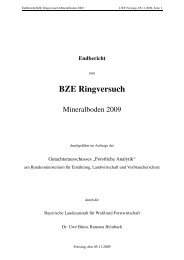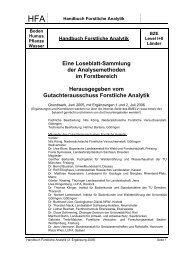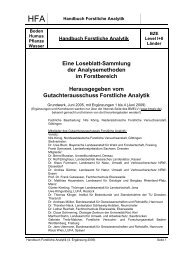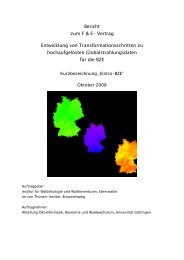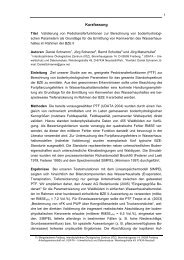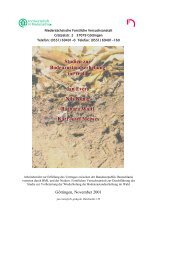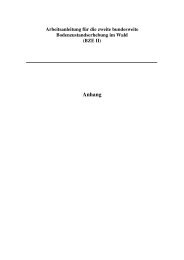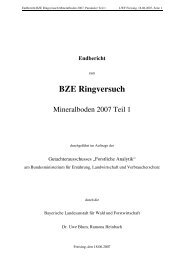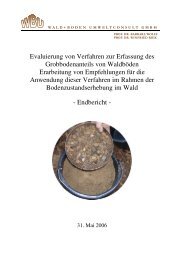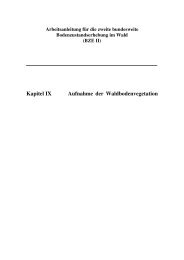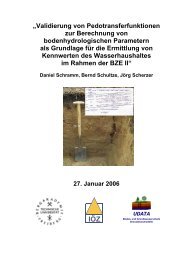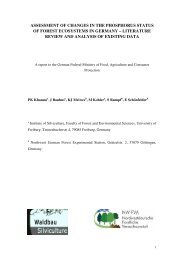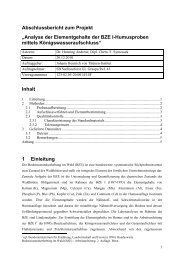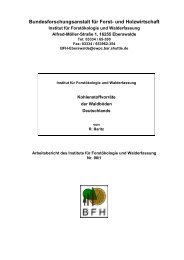assessment of changes in the phosphorus status of forest ...
assessment of changes in the phosphorus status of forest ...
assessment of changes in the phosphorus status of forest ...
You also want an ePaper? Increase the reach of your titles
YUMPU automatically turns print PDFs into web optimized ePapers that Google loves.
EXECUTIVE SUMMARY<br />
1. The first nationwide <strong>forest</strong> soil survey, BZE1, <strong>in</strong>cluded an <strong>assessment</strong> <strong>of</strong> tree<br />
nutrition on 1014 sites. For <strong>the</strong> <strong>assessment</strong>, concentrations <strong>of</strong> nutrients <strong>in</strong> <strong>the</strong><br />
foliage and total amounts <strong>in</strong> <strong>the</strong> litter layer and soil samples were determ<strong>in</strong>ed. In<br />
<strong>the</strong> report by BMELF (1997), it was noted that a significant number <strong>of</strong> <strong>forest</strong> sites<br />
had low to very low P levels <strong>in</strong> <strong>the</strong> foliage. The percent <strong>of</strong> sites for <strong>the</strong> different<br />
tree species which had low to very low P concentrations <strong>in</strong> <strong>the</strong> foliage were (<strong>in</strong><br />
brackets are <strong>the</strong> critical limits used) : Norway spruce (Picea abies) – 59 % (



